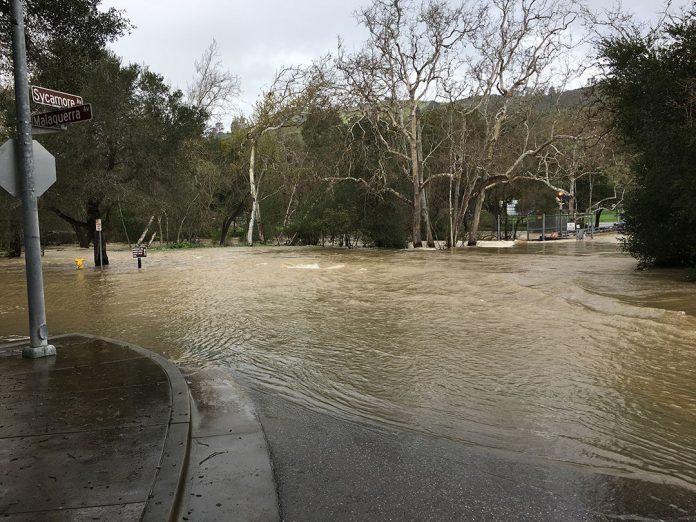
With all the money that’s spent in our county on flood prevention and control, it’s reasonable to expect that there would be some good plans to prevent a Katrina-style urban flood. Judging by what occurred to residents in neighborhoods to the north—in a modern city of a million people—it’s safe to conclude that local communities are not well prepared for large-scale natural disasters.
The Anderson and Coyote reservoirs overtook their floodgates and water engulfed residents along the Coyote Creek, including neighborhoods just a few blocks from city hall in downtown San Jose. The interconnectedness between South Valley watersheds and nearby population centers is a fact of our modern existence. However, the information flow between water district officials and municipal emergency officials show a confused series of events, infused with misinformation and a failure to properly warn residents in affected areas.
The Anderson Dam was known to be in an unsafe, overfilled state for more than two weeks prior to this week’s disaster. And although routine public announcements were issued, no effort was made to educate residents in the danger zones how to prepare for a sudden onslaught of contaminated water at their doorsteps.
The botched warning systems strongly suggest that in a larger disaster—such as a seismically-triggered dam break on the fault line beneath Anderson Reservoir—the results, needless to say, would be catastrophic.
The Coyote Creek flooding suggests the City of Morgan Hill might need to update its disaster evacuation plan. Morgan Hill City Manager Steve Rymer said at a recent council meeting that such a plan relies heavily on directing people out of town via U.S. 101, which is a Catch 22. The freeway was impassable for much of Tuesday, when the Coyote Canal breached under the pressure of historic creek flows and pouring rain that submerged all northbound travel lanes until the water district could repair the canal.
How can a freeway located along a flood zone protected by aging facilities be relied on as a passage to safety in the event of a catastrophic, citywide deluge that might prompt widespread evacuations?
As for alternate routes, all major mountain passes (Highways 129, 152 and 17) out of South County to higher ground have been closed at various times in recent days due to the rain. Many residents would be trapped on the valley floor under such conditions.
Another problem is that the reservoir’s outlet pipes are too small to prevent the reservoir from reaching unsafe levels that could trigger an earthquake or, as occurred on Tuesday, a flood of population centers.
We need to fix the dam, its oversight and the communication systems to get the word out. The decaying infrastructure must be modernized and the scandal-plagued district needs to rid itself of conflicts of interest, such as no-bid sweetheart multi-million dollar contracts to consultancy firms owned by spouses of district officials. Public trust is essential. Transparency, credibility and competence are minimum requirements for a public agency.







